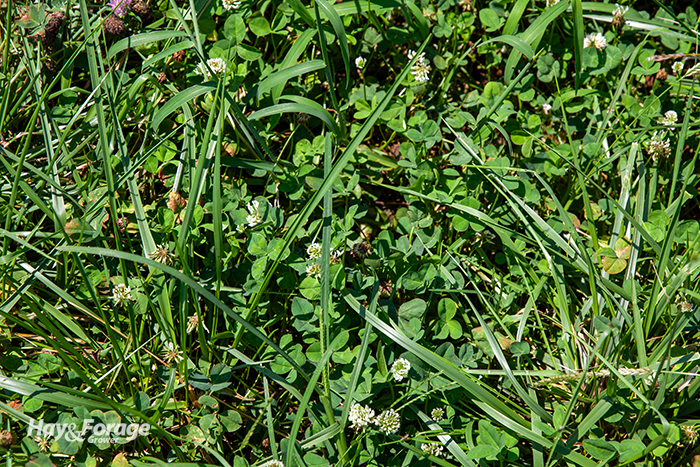
Containing a typical mix of both grasses and legumes, pasture weed control has always been an exercise in trade-offs. Most herbicides either control grasses or broadleaves without regard to desired species of the same class. Some even have post-grazing restrictions or don’t allow for hay production to be shipped off the farm. In essence, there is no silver bullet.
Corteva’s new pasture herbicide, NovaGraz, adds another option to the pasture weed control toolbox. What makes it somewhat unique is that many broadleaf weeds are controlled, while white clover exhibits tolerance and lives on as a valuable pasture legume component.
“Our research has found NovaGraz can provide effective control of common pasture weeds, and the label lists effectiveness on a range of other annual, biennial, and simple perennial weeds,” reports Mark Renz, an extension weed management specialist with the University of Wisconsin-Madison.
Writing in the Midwest Forage Association’s Forage Focus magazine, Renz also notes that even though creeping perennial pasture weeds like Canada thistle are not listed on the label, he has observed this weed to be suppressed in season; however, it readily resprouts the following year, the weed specialist cautions.
Research confirmation
Renz conducted research at two locations in southern Wisconsin to document white clover tolerance. NovaGraz was applied at a rate of 24 fluid ounces per acre to two rotationally grazed pastures in early June. The cool-season pastures contained both white and red clover. Weed control was maintained throughout the season with a five-fold reduction in weed biomass compared to the nontreated control (NTC).
The white clover was not injured as its presence mirrored the NTC at 30, 60, or 90 days after treatment. On the other hand, red clover proved sensitive and was eliminated from both pastures the year of treatment. Given the combination of a sensitive and tolerant legume in pastures, this resulted in a reduction in legume biomass of 43% when summed over the entire season.
“These trends with white clover and red clover persisted one year after treatment,” Renz states. “While grass biomass was not increased in these studies, we have seen a positive response in other studies.”
The results of Renz’s trials highlight the trade-offs with NovaGraz. It can effectively control common pasture weeds. White clover populations have tolerance and will persist after application, but red clover is sensitive and severely reduced after applications.
“An additional benefit for NovaGraz is that it has limited restrictions compared to products containing aminopyralid, such as GrazonNext and DuraCor,” Renz notes. “The aminopyralid herbicides require that manure can only be applied to a grass crop, and they limit the export of hay off farm in many Midwestern states. These restrictions are either not present or have a limited duration with NovaGraz,” he adds.
Weigh the trade-offs
To maximize return on investment, Renz suggests applying NovaGraz to pastures with high populations of broadleaf weeds and white clover. In such situations, weed reduction will likely result in a grass biomass improvement while maintaining white clover. This translates to additional pasture yield and quality, and it helps to avoid the need for high rates of nitrogen fertilizer required by a pure grass stand.
If red clover has a significant presence in pastures, Renz recommends avoiding NovaGraz unless a severe reduction of the species can be tolerated. The weed scientist is currently evaluating how to minimize the impact to red clover while maintaining a high level of weed control.

